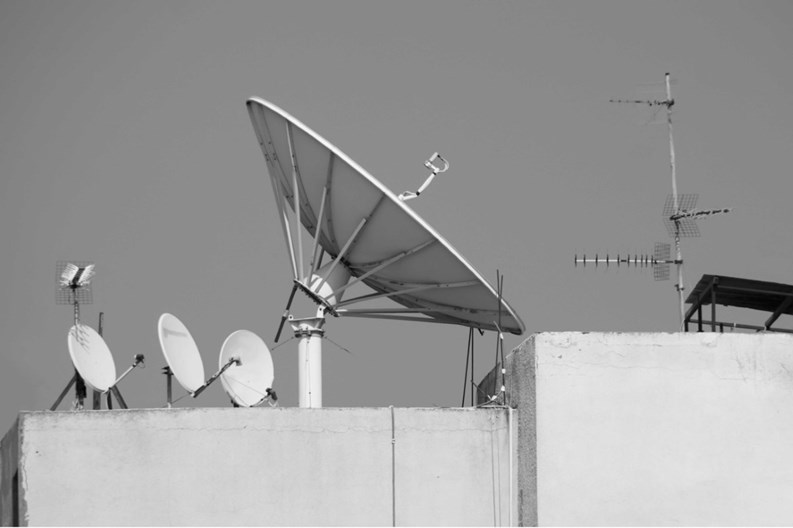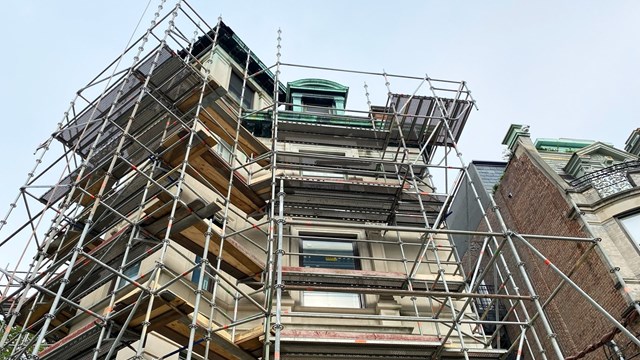As the trilogy of real estate values rising, building usage changing, and cellphone and Internet communications became universal, wireless telecommunications companies became popular defendants in the Commercial Part of New York’s Civil Court. Owners began examining their rooftop antenna agreements to determine means to terminate them. Many of these owners wanted to demolish the buildings or convert from commercial to residential buildings or add multiple uses for their rooftop property. Battles for control over the rooftops of these buildings became a high stakes game. This article attempts to arm building owners with a few tools to negotiate a better and more lucrative rooftop agreement.
The most powerful weapon for negotiating the most favorable agreement is to use a license agreement instead of a lease. Chief among the owner-licensor’s rights in a license relationship is the right to revoke the license “at will” and to use “self-help” to remove a defaulting licensee from the licensed premises without having to endure months or years of lengthy and frustrating litigation to regain possession of valuable real estate.
License Versus Lease
License agreements are perfect for rooftop antenna agreements. However, the parties need to do more than title the agreement a license. Whether an agreement will be deemed a “license” or a lease will depend on the presence or absence in the agreement of the three essential characteristics of a real estate license: (1) A clause allowing the licensor to revoke “at will;” (2) The retention by the licensor of absolute control over the premises; and (3) The licensor’s supplying to the licensee all of the essential services required for the licensee’s permitted use of the premises.
Courts have found so-called licenses actually to be leases where any one or more of these characteristics are either missing from the agreement altogether or not sufficiently present in the powers retained by the licensor. However, the less control given the licensee, the more likely the agreement is to be a license, because a license offers no autonomy, but merely allows a party to render services within an enterprise conducted on premises owned or operated by another, who has supervisory power over the method of rendition of the services. So, license agreements perfectly fit the bill for a rooftop antenna agreement. First, the building owner wants to be able to revoke the agreement at will. Second, the owner stays in control of the premises and does not surrender absolute control over the premises. Third, the owner supplies all of the essential services, including access to electricity, landlines, and a control cabinet.
Even with these prerequisites, careful drafting of appropriate license agreements will be required. Building owners will also have to make judgments about the commercial feasibility of obtaining licensees who are willing to accept license agreements with “at will” revocation clauses. If their licensee occupants do not “cure” their default, the licensees will be subject to peaceable self-help eviction from the licensed premises swiftly and without further ado. Yet, it bears repeating that if the license is not “at will,” it is not a license and the owner is stuck with all of the hassles associated with removing an ordinary tenant.
Exclusivity Clause
Beware of telecommunications companies’ attempts to garner exclusivity clauses in their leases whereby an owner’s entire roof space will be designated to one company. Besides the obvious revenue loss, such a provision will bind the building owner for many years. However, the agreement can and should explicitly state that the wireless provider will not have exclusive use of the rooftop, but rather will share the space with several wireless providers.
Designating the Licensed/Leased Space
Many existing contracts specify the roof without diagrams or other limitations and have resulted in telecommunications companies expanding far more than the intended use and thereby interfering with building owner’s ability to utilize additional roof space. All contracts should include measurements and a diagram demonstrating the specifications for the rented space and should include an explicit prohibition against expanding beyond the designated allotments. In this regard, one must be careful not only to account for the main tower but for its guy-wires and supporting cabinets. Just as a matter to elementary engineering, the anchorages for the guy-wires are some distance from the foot of the tower itself, creating numerous discreet footprints on the roof other than that of the main tower. All of these footprints must be accounted for in the diagrams. Since the guy-wires ascend at an angle, on roofs where residential tenants are allowed recreational use, the designated space must also specify safety cordoning of the guy-wires and tower.
Physical Capacity of the Building’s Roof
An engineer must be hired to determine if the land and building can support the antennae and their equipment. The engineering firm ought to determine whether the roof can bear the additional weight and whether there are any leaks, whether the new equipment will affect the roof’s warranty, and how much space is already taken up by any existing equipment. Inspection costs usually range from around $950 to $2,500, depending on the size and condition of the roof. The property owner should also provide in the contract that plans for the actual installation be drafted by a certified engineer in advance of the installation. Furthermore, the wireless provider should be responsible for all costs associated with these engineering installation plans, and the property owner ought to require his or her written acceptance of the proposed plans prior to installation.
Assignment, Subletting and Compliance
Assignment and subletting clauses should be banned so your space and the agreement are not traded like baseball cards. The building owner should keep full control over the licensed or leased space and maximize its revenue as well as enabling itself to understand who or what is using the space over its head.
The standard clause in most commercial agreements requiring an occupant’s compliance with all laws becomes more important in antennae rooftop leases as operating a telecommunications facility may require special building permits, licenses and other governmental approvals that are continuously amended and expanded. The tenant/licensee must be liable for applying and paying for all fees associated for obtaining a zoning variance and the landlord/licensor shall not interfere and cooperate in the process.
Indemnification Clause
Every contract should include a clause that indemnifies the building against any personal injury claims and all other lawsuits arising from the telecommunications company’s negligence, intentionally wrongful acts or omissions, violations of any law, or material breach of contract. A favorable clause will also indemnify the building against damage by the antennae and supporting equipment to the building, residents of the building, and strangers to the building such as pedestrians on the street below. While it is rare for such antennae to collapse, they do, particularly in storm conditions, and could fall on the roof and destroy parts of the parapet or fall off the roof and kill somebody. The contract should also require the telecommunications company to defend, cure and indemnify the building owned for any violations of federal communications laws, and municipal sanitation and building codes concerning the telecommunications installation.
Taxes and Insurance
Since the installation of antenna equipment is essentially an improvement to the building, it can cause the taxes assessed to the building to go up. Therefore, the agreement must spell out in very clear language that any increases in taxes attributable to the telecommunications installation shall be the sole liability of the telecommunications company.
An insurance provision with the following language should be negotiated into the agreement:
Commercial General Liability – The policy shall provide a $__________ combined single limit for Bodily Injury and Property Damage, including Products Liability, Contractual Liability, Water Damage, Legal Liability, and all standard policy from extensions. The policy must provide $__________ general aggregate (per location) and be written on a Blanket basis, and must be endorsed to cover the indemnification specified under this paragraph. Licensee shall endorse policy to include the Licensor as additional insured. Definition of additional insured shall include all members, officers, directors, employees and agents representing the Licensor. Coverage for an additional insured shall apply to agents representing the Licensor. Coverage for an additional insured shall apply on a primary basis irrespective of any other insurance, whether collectible or not. Licensee shall deliver to Licensor a certificate of insurance evidencing such insurance and naming Licensor as additional insured within five (5) days of the date of this Agreement. Licensor shall not under any circumstances be responsible for fire, theft, mischief, pilferage or damage to the telecommunications equipment or any other equipment or materials installed or left be Licensee at the Premises or caused to the premises by Licensee equipment or employees; such damage and injury shall be the responsibility of Licensee and Licensee shall indemnify Licensor against any other claims.
The telecommunications company’s insurance policy should also be inspected by the building owner or management. Most telecommunications companies have a general liability policy, covering basics like personal injury liability and product liability. The size of the policy varies in amount based on the size of the company. Any telecommunications company should be ready to present an adequate certificate of liability insurance to owners.
Disease, Demolition Clauses and Access
Although the telecommunications industry will quickly point to studies that antenna towers do not cause physical harm or disease to humans, a clause should be inserted allowing the termination of the agreement upon evidence to the contrary. In addition, all hazardous materials should be banned from use on the roof and a demolition clause and a sale termination clause must be included in every contract to ensure the change of use or the sale of the property.
Even if the wireless provider is to have 24-hour access to the roof, the property owner may still contract that the provider obtain the property owner’s written consent prior to access so the owner knows all visitors to the building. Further, such clauses further ensure that the contract will be construed as a license.
By using the above referenced advice and with a long-term view of roof top space, building owners and managers will more effectively increase the owner’s income and hedge in liabilities and losses.
Adam Leitman Bailey is the founding partner, and Dov Treiman, the landlord-tenant managing partner of the Manhattan-based law firm of Adam Leitman Bailey, P.C. Benjamin Marzolf, a second year student at New York Law School, participated in the preparation and research of this article.










Leave a Comment